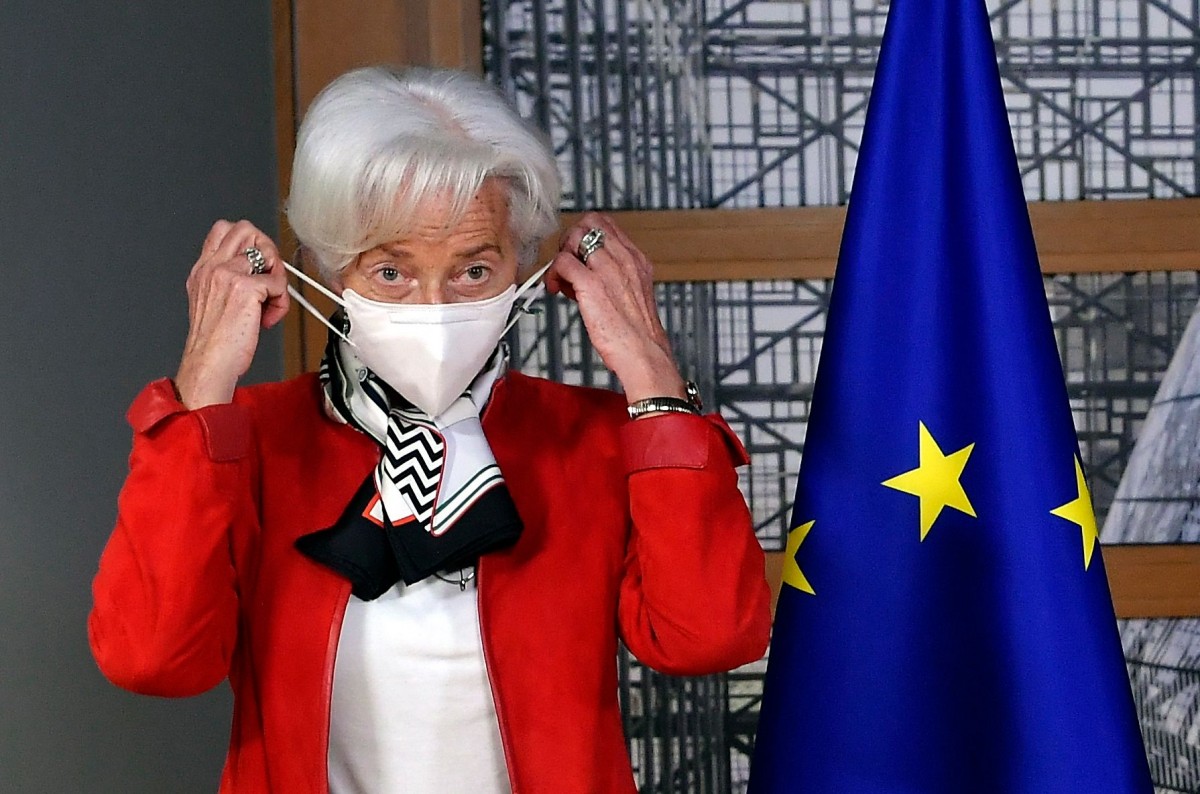The ECB’s ‘Reaction Function’ Clarified In March Minutes
The ECB’s last news conference left many market participants a bit puzzled about the ECB’s exact reaction function. The just-released minutes of the meeting shed more light on what the bank's thinking.

ECB President, Christine Lagarde
Here are the most remarkable passages from the ECB’s minutes:
- Risks to the growth outlook had become more balanced. This was a significant change in the communication after the March meeting. The minutes of the meeting illustrates that there must have been a lively debate, almost as in any economic research department currently, with some ECB members pointing to more positive factors for growth and others to more negative factors. It is remarkable how often reference was made to the US fiscal stimulus as a potential source of higher growth in the eurozone. Remember that during the press conference, ECB president Christine Lagarde had simply said that the Biden plan had not been factored into the ECB staff projections. This is technically correct, but it would not have been the first time that the Governing Council could have taken a slightly different stance on the economy than the staff projections. But they didn’t.
- As for inflation, it is still remarkable that the Governing Council seems to have been surprised by the higher inflation prints since the start of the year. However, higher inflation is still mainly seen as a temporary phenomenon.
- The decision to front-load asset purchases was not unanimous, as the phrase “there was broad consensus among members that the recent rises in risk-free rates and GDP-weighted sovereign bond yields required a scaling-up of the pace of the purchases under the PEPP.”
- There will be a quarterly assessment of financing conditions and the inflation outlook “in order to determine the pace of purchases needed to keep financing conditions favorable”. It remains to be seen whether financial markets stick to such a quarterly rhythm. We would argue that markets tend to be a bit faster.
Front-loading, soft, and moving caps on yields
The ECB’s last news conference left many market participants a little puzzled about the exact shape of the ECB’s reaction function. There were simply too many ‘holistics’, ‘multifaceted’, ‘downstreams’, and ‘upstreams’ rather than a clear description of how the ECB would react to higher inflation and higher bond yields. Fortunately, several speeches and some blog entries since the March press conference have clarified the ECB’s current thinking. In our view, a recent speech by ECB board member Isabel Schnabel has become the best compass we could find to see where the ECB’s needle is currently pointing to.
In fact, what Schnabel told us and what the minutes of the March meeting also reflect was that the ECB accepts higher longer-term nominal rates as a result of higher inflation expectations. So, as long as real rates remain stable, everything is fine. Any increase in real rates will only be tolerated by the ECB if it reflects improved growth prospects. Consequently, the ECB’s current reaction function can be summarised as: so long as bond yields rise for good reasons, the ECB is relaxed. If they start rising for the wrong reasons, the ECB will intervene. This is no real yield curve control but rather a soft and moving cap on yields.
The debate or even fear of surging bond yields was a bit of a storm in a teacup
In the end, the debate or even fear of surging bond yields was a bit of a storm in a teacup. Or put differently, financial markets quickly understood that the acceleration of eurozone inflation was - and will be - mainly the result of one-off factors. This kind of inflation is rather deflationary and definitely no reason for the ECB to react with any premature tightening. On the contrary, the ECB has made clear that it will look through any temporary increase in inflation and would not tolerate an unwarranted tightening of financing conditions.
This is where the front-loading of asset purchases came from. As illustrated by yesterday’s comments from the Dutch central bank governor, Klaas Knot, this discussion about soft or hard caps on bond yields could change quickly once the recovery has gained momentum and become sustainable. Once this is the case, the ECB will be even clearer on what the right and what the wrong reasons for higher bond yields are. In our view, there won’t be any reloading after the front-loading of the crisis asset purchases.
Disclaimer: This publication has been prepared by ING solely for information purposes irrespective of a particular user's means, financial situation or investment objectives. The information ...
more


